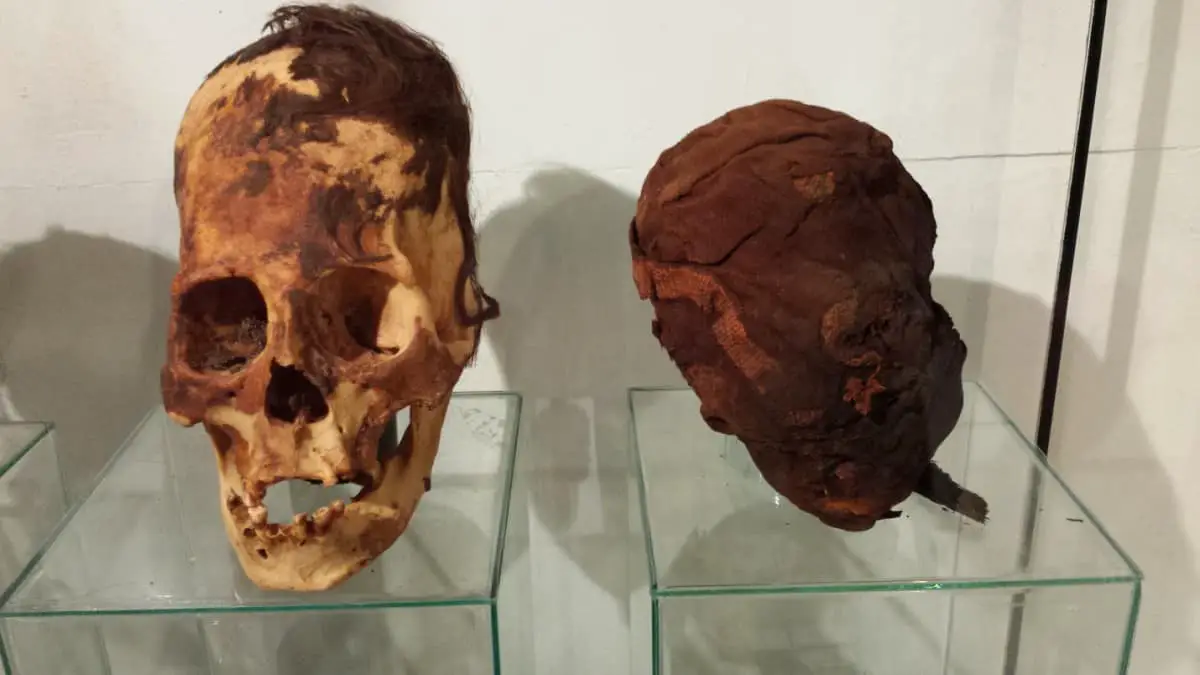
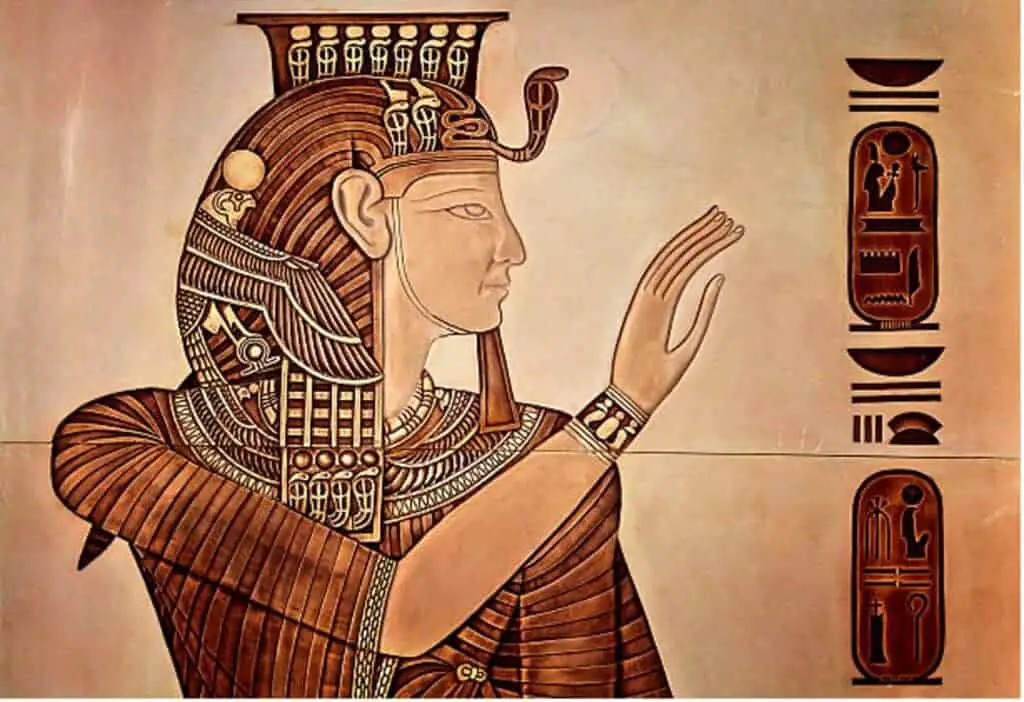
When we hear the name Cleopatra, we think of a beautiful and alluring woman with a tragic story. But who was she? Cleopatra was the last active pharaoh of Ptolemaic Egypt and briefly survived as pharaoh by her son Caesarion. After her reign, Egypt became a province of the Roman Empire.
Cleopatra was a member of the Ptolemaic dynasty, a Greek family of Macedonian origin that ruled Egypt after Alexander the Great’s death during the Hellenistic period. The Ptolemies, throughout their dynasty, spoke Greek and refused to speak Egyptian, which is the native language of the Egyptians (Schiff 169).
By contrast, Cleopatra could speak multiple languages and serve as the translator for her father during diplomatic meetings. Philo of Alexandria said she was “bright-eyed and brilliant to look upon” (Hare). She was the only Ptolemaic queen to learn the Egyptian language.
Early Life Of Cleopatra
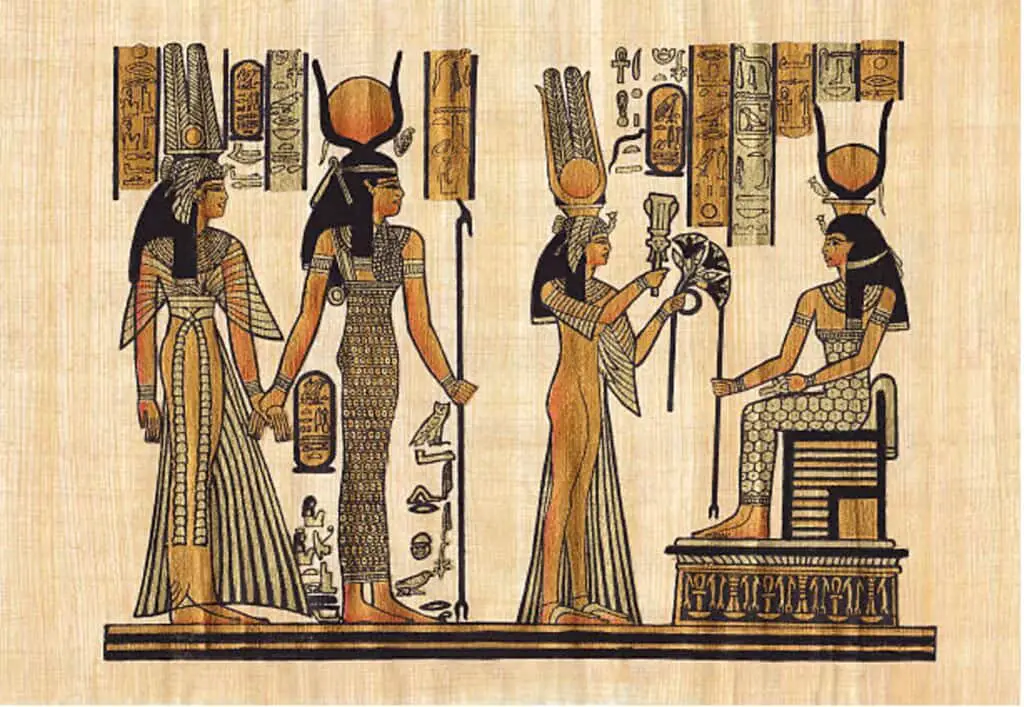
Cleopatra, the Egyptian queen, was born in early 69 BC in Alexandria, Egypt. Her parents were Ptolemy XII Auletes and an unknown woman. Many historians believe that her mother could have been Cleopatra V Selene I, Ptolemy XII’s wife, who was probably his half-sister. Auletes became king in 51 BC after a rebellion deposed his oldster brother Ptolemy XI. His mother was of Greek descent and was possibly the only member of her family to have been born in Egypt (Duggan).
She had two sisters, Cleopatra VI Tryphaena and Cleopatra VII Thea Philopator, and a brother called Ptolemy XIII. All of her siblings were much younger than she was. In the spring of 51 BC, Ptolemy XII died suddenly. Cleopatra and Ptolemy XIII were proclaimed co-rulers by their father’s will, but a regency council was appointed to oversee them until they came of age. Cleopatra VI Tryphaena (her eldest sister) and Ptolemy XII’s chief minister Pothinus preferred Ptolemy XIII, who was just ten years old.
Some believe Cleopatra vii was too young to rule, and her youthfulness is one of the reasons she was not accepted as a Pharaoh. She may have only been eighteen when she took the throne, but in Egyptian culture, that was considered adulthood. In many ways, she was the ideal candidate for a pharaoh. Making her co-ruler with her ten-year-old brother was a way of ensuring she would not try to rule on her own.
Did Cleopatra’s Nationality Make Her Different?
Some people believed that Cleopatra was not Egyptian. Plutarch, a famous Greek historian, wrote that she was of Macedonian Greece descent. This idea was repeated by many other historians, both ancient and modern. Some people believe her family may have been from Greece, Syria, or Persia! Lately, historians have been trying to clear up this confusion. They looked at Cleopatra’s coinage, statues, and writings and concluded that she was Egyptian.
Her nationality did make her different in some ways, though. For example, she was the first member of her family to learn the Egyptian language. She also wore traditional Egyptian clothing and had herself portrayed in the traditional style of an Egyptian queen. With all of this evidence, it is safe to say that Cleopatra was, in fact, Egyptian.
What did Cleopatra look like?
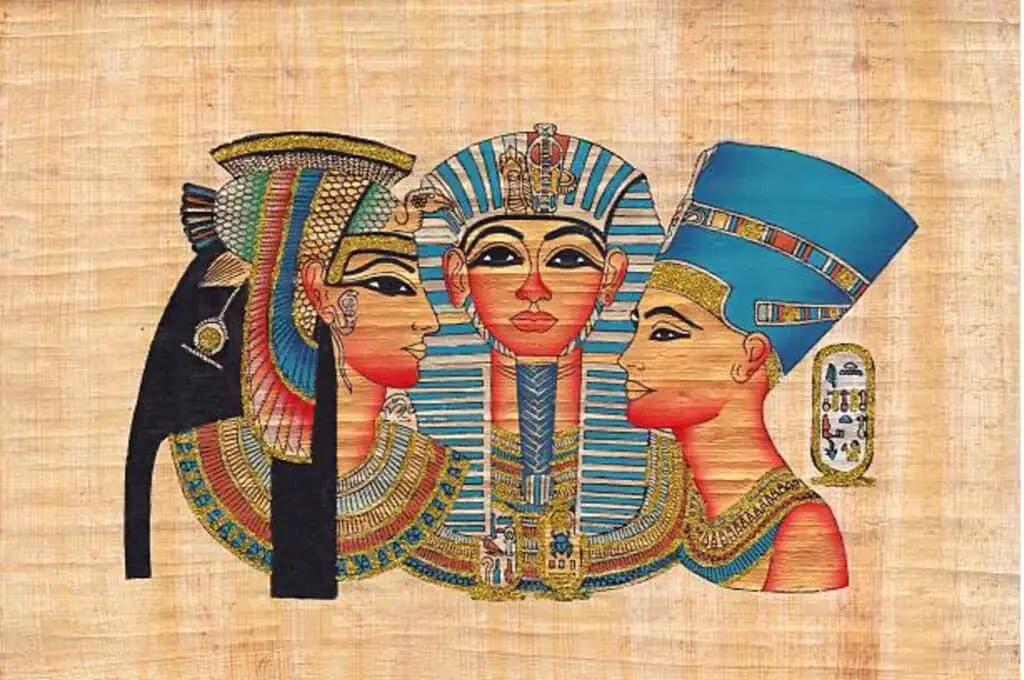
Some many busts and coins show us what Cleopatra may have looked like, but we cannot be sure if they are accurate. We know that she was not tall or skinny like many paintings and movies show her. She was probably a bit overweight and had a hooked nose. She may have even been considered unattractive by some people! Even though she was not regarded as beautiful, she could still charm some of the most powerful men in the world. The royal palace was full of paintings and statues of Cleopatra, so she must have been proud of her appearance.
The Relation Of Pompey, Julius Caesar With Cleopatra
Pompey and Cleopatra had an extraordinary relationship. Pompey was one of Rome’s most famous and influential generals. He was also a good friend of Julius Caesar. When Pompey was forced to flee Rome, he went to Egypt. The king at that time, Ptolemy XIII, was only twelve years old. He was not able to control the country, so Pompey took over. Caesar defeated Pompey in a battle, and he ran to Egypt for safety. Ptolemy XIII had Pompey killed when he arrived.
Caesar then went to Egypt. He was angry at Ptolemy XIII for having his friend killed. Caesar eventually forgave him, but Ptolemy XIII died soon after. Caesar made Cleopatra, Ptolemy XIII’s sister, the new queen of Egypt.
Caesar and Cleopatra vii philopator then became lovers, and she had his child, Ptolemy Caesar, also known as Caesarion. After Caesar’s assassination, Cleopatra became friends with Mark Antony, another Roman general. She had three children with him, too. In 46 BCE, Julius Caesar’s great-nephew Octavian became the first Roman emperor, Augustus. Antony and Cleopatra were his enemies. Caeser, Pompey, and Antony all three were great friends of Cleopatra.
Youth And Successions
At the time of Caesar’s death in 44 BCE, Cleopatra was about 21 years old, and Ptolemy XIV was about 10. She had two children by Julius Caesar: Caesarion, who was three, and an infant son, Ptolemy XV Philopator Philometor Caesarian (Caesarion), born in 47 BCE. Also living in the palace were Cleopatra’s younger siblings: the four-year-old Arsinoë IV and the infant Ptolemy XIV. Cleopatra poisoned her brother Ptolemy XIV and made Caesarion her co-regent.
In September of 43 BCE, Antony summoned Cleopatra to meet with him in Tarsus, a city in Asia Minor. She went, sailing down the Nile on a golden barge with silver oars and purple sails. Antony was so charmed by her that he ignored his duties as a Roman general and spent the winter of 41-40 BCE with her in Alexandria. Cleopatra and Antony have three children: Cleopatra Selene, Alexander Helios, and Ptolemy Philadelphus.
The Battle Of Actium And the Role Of Cleopatra
The Battle of Actium was the decisive confrontation of the Final War of the Roman Republic. It was fought on 2 September 31 BC, on the Ionian Sea near the promontory of Actium in Greece. The naval action was between Octavian and the combined forces of Mark Antony and Cleopatra on one side and the forces of Marcus Aemilius Lepidus and the fleets loyal to him on the other side.
Marcus Vipsanius Agrippa commanded Octavian’s fleet. In contrast, Antony’s fleet was supported by the power of Queen Cleopatra of Ptolemaic Egypt. Octavian had the backing of the Roman Senate, while Antony’s support came primarily from Egypt.
The Fleet Of Octavian
Octavian’s fleet was composed of his ships and ships from his allies. He had a total of 400 ships, while his opponents had 500 ships. Octavian’s fleet was divided into two divisions, with Agrippa commanding the first and Octavian commanding the second. The first division comprised 200 ships from Octavian’s allies, while the second comprised 200 ships from Octavian’s fleet. For the most part, Octavian’s fleet consisted of smaller ships, while his opponents had larger ships.
Surprising Facts That Are Unknown About Cleopatra
Some surprising facts are not well known about Cleopatra. Some of these facts include the following:
- Three Of Her Siblings Died By Her Hand
Cleopatra was one of the most ruthless rulers in history. She was not afraid to kill her family members to maintain her power. Three of her siblings, Ptolemy XIII, Ptolemy XIV, and Cleopatra Selene I, were killed by her orders. She also had her brother, Ptolemy XV, murdered. In addition, she is believed to have had a hand in the death of her husband, Julius Caesar.
When she was done, she was the only member of her family left alive. Some historians believe that she may have even killed her son, Ptolemy XVI, to prevent him from ascending the throne. For Cleopatra, power was everything, and she would stop at nothing to keep it. Cleopatra vii was very controversial in her time.
- Cleopatra Was The Product Of Incest
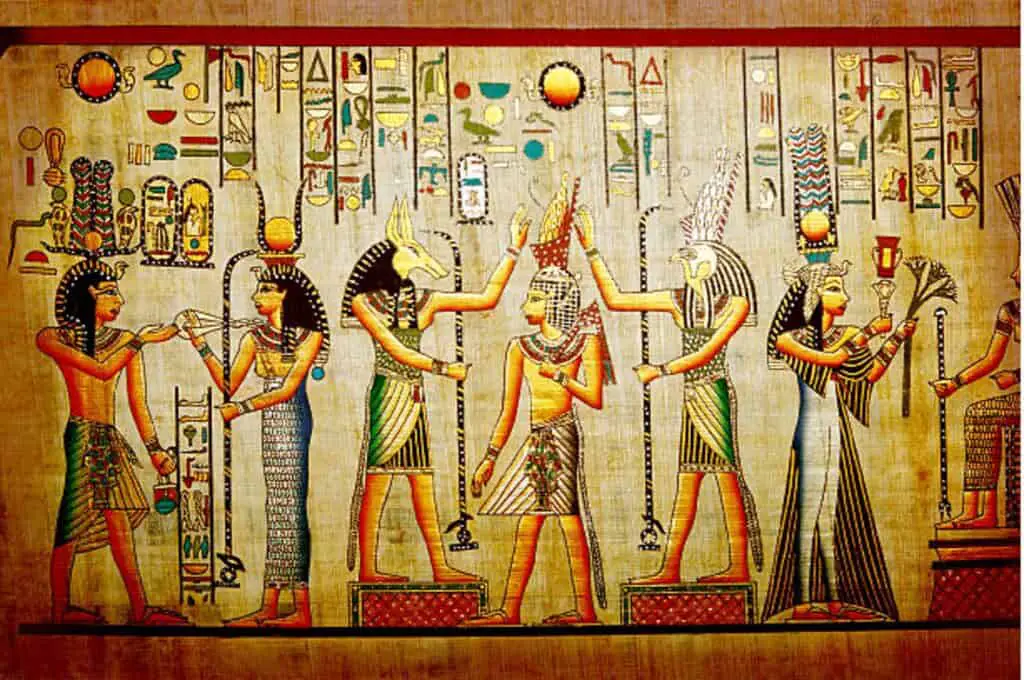
Cleopatra’s parents, Ptolemy XII and Cleopatra V of Egypt were siblings. This means that Cleopatra was the product of incest. While this was not uncommon in Egyptian royalty, it was still considered taboo. As a result, Cleopatra was often ridiculed by her enemies and was used as a propaganda tool by Octavian.
More than a dozen of Cleopatra’s ancestors were married to their siblings, including her grandfather Ptolemy IX, who was married to his sister Cleopatra Selene I; Ptolemy X Alexander II was married to his half-sister Cleopatra Berenice III, and Ptolemy XI Alexander I was married to his niece Berenice IV. The chain of incest continued with Cleopatra herself, who was married to her younger brother Ptolemy XIV and later to her nephew Ptolemy XV Caesarion.
- Cleopatra’s Beauty Wasn’t Her Biggest Asset
While Cleopatra is often portrayed as a beautiful woman, her physical beauty is not her biggest asset. Many ancient historians describe her as being average looking. Roman authorities spread false rumours about Cleopatra to make her appear as a promiscuous woman who seduced others for political gain. In reality, Cleopatra was a highly intelligent and educated woman.
She was well-versed in literature, philosophy, and politics. In addition, she was an excellent negotiator and strategist. These were the qualities that made her a successful ruler. Perhaps her biggest asset was her ability to charm those around her. She was said to be a very charismatic woman who could easily win people over.
- Cleopatra Knew How To Make An Entrance
Cleopatra believed she was a living goddess isis and ensured everyone knew it. She was known for her extravagant lifestyle and her love of luxury. When she wanted to make an impression, she would go all out.
For instance, when she met Julius Caesar for the first time, she arrived in a golden boat adorned with purple sails. She was also said to have dissolved a priceless pearl in a glass of vinegar and drank it to impress Caesar.
- She Was A Skilled Diplomat
Cleopatra was more than just a pretty face. She was an excellent diplomat and politician. After her father’s death, she quickly gained control of Egypt by negotiating with Rome. When Julius Caesar came to Egypt, she charmed him and convinced him to declare her the rightful ruler of Egypt. After Caesar’s death, she allied with Mark Antony, one of Rome’s most powerful generals. This alliance was vital in maintaining her power. When Antony turned against Rome, she cleverly negotiated a peace treaty with Octavian. As a result, she was allowed to keep her kingdom.
- Cleopatra Was Living In Rome At The Time of Caesar’s Assassination
Some historians believe Cleopatra may have had a hand in the assassination of Julius Caesar. At the time of his death, she was living in Rome with him. She was pregnant with his child and said she was deeply in love with him. Starting in 46 B.C., Cleopatra caused quite the scene when she arrived in Rome with Julius Caesar. She was the first Egyptian queen ever to set foot in the city. The Roman people were not used to seeing a woman with so much power. Caesar was stabbed to death just a few months after she arrived. After his death, she quickly left Rome and returned to Egypt.
- Cleopatra And Mark Antony Formed Their Drinking Club
Cleopatra and Mark Antony were known for their love of luxury. They lived extravagantly and enjoyed all the finer things in life. One of their favorite pastimes was drinking. They even formed their drinking club, which they called the Inimitable Livers. The club was made up of Cleopatra’s friends and supporters. They would meet regularly to drink and enjoy each other’s company. 41-40 BC was when this drinking club was at its peak.
- Cleopatra Led A Fleet In A Naval Battle
Cleopatra was not just a pretty face. She was a skilled military leader as well. In 31 B.C., she led a fleet of Egyptian ships in a naval battle against Octavian’s forces. The battle took place near the Greek island of Actium.
Cleopatra’s fleet was defeated, but she managed to escape. This was a turning point in the war. After her defeat, she and Antony withdrew to Egypt. Octavian eventually followed them and besieged the city of Alexandria.
10 Reasons Why The Roman Senate did Not like Cleopatra:
As the last Ptolemaic pharaoh of Egypt, the Roman Senate did not like Cleopatra; Cleopatra (69 BCE – 30 BCE) was a controversial figure in her own time. The dislikeness the Roman Senate felt for her was large because she represented everything they were not: female, non-Roman, and a monarch (albeit one descended from Alexander the Great of Macedonian Greece). Cleopatra’s gender meant that she could never be more than a regent for her son – even though she was often more capable than him.
Her very existence threatened the Roman concept of the patriarchal society in which women knew their place and obeyed their men. As for her heritage, well, that was just plain old-fashioned xenophobia on the part of the Romans. They saw Cleopatra as an upstart eastern queen who thought she was just as good as, if not better, a Roman emperor. And, of course, she was a monarch, which made her nothing more than a potential threat to Rome’s system of government in the eyes of the Senate.
1. Cleopatra’s Rudeness Towards Octavian
During the last years of her life, Cleopatra allied herself with Rome’s greatest enemy, the ambitious general Mark Antony (l. 83-30 BCE), against the rising star of the Roman world, Octavian (later Augustus Caesar, l. 63 BCE – 14 CE). In 32 BCE, Antony and Cleopatra sailed up the River Tiber to Octavian’s camp near Rome, unannounced and uninvited.
This was a severe breach of protocol as it put the two most influential people in the world on the same level, something neither would have tolerated under other circumstances. Cleopatra made matters worse by ordering her fleet to fire on Octavian’s ships, an act of war that could have destroyed Rome itself had Octavian not been able to call up more ships from his nearby base.
2. Her Alliance with Antony
Even worse than her rudeness towards Octavian was Cleopatra’s alliance with Mark Antony. After defeating Brutus and Cassius at the Battle of Philippi in 42 BCE, the three most powerful men in the world were Antony, Octavian, and Lepidus (l. c. 89 – 13 BCE). The three divided the world, with Lepidus taking Africa, Antony the East, Octavian Rome, and the West. This arrangement lasted until Lepidus was removed from power in 36 BCE.
Soon after, Antony married Octavia Minor (l. c. 69 – 11 BCE), the sister of Octavian, in an attempt to cement the peace between the two most powerful men in the world. Not only did Cleopatra refuse to attend the wedding (which would have been a significant diplomatic gesture), she sent Octavia an insulting message, ostensibly from Antony, in which she compared the Roman woman unfavorably to herself.
3. Her Rejection of Octavian’s Offer
In 31 BCE, after defeating Antony and Cleopatra’s forces at the Battle of Actium, Octavian offered Cleopatra any terms she wanted to end the war. She could keep her kingdom and rule as she always had; all Octavian asked was that she stop backing Antony.
Cleopatra refused, vowing never to give up her fight against Rome even though it was clear, at this point, that she could not win. Octavian invaded Egypt the following year, and when Cleopatra learned he was on his way, she smuggled herself into the city in a carpet so she would not have to meet with him and surrender.
It is also said that she ordered her children by Antony to be killed so that they would not fall into Octavian’s hands and be used as hostages or made into Roman enslaved people.
4. Cleopatra Never Shake Hands With Octavian
Cleopatra would not give in even when she finally realized that the war was lost and Octavian’s forces had breached the walls of Alexandria. When Octavian entered the city, he demanded to meet with her, but she refused. She would not even allow him into her palace, let alone shake his hand, an act which would have been tantamount to a formal surrender.
Octavian had her brought to him by force, but she still would not give in, even when he offered her any terms she wished. She refused until she learned that Antony had fallen on his sword after being told (falsely) that Cleopatra was dead. At this point, she had herself smuggled into a tomb, where she intended to kill herself.
5. The Racial Slur Against Cleopatra
Even though she had defeated him, Octavian admired Cleopatra’s courage and stubbornness in the face of inevitable defeat and, when she did finally kill herself, had her body treated with the respect due a queen and not, as some Roman historians would later claim, thrown into the Nile like that of a common criminal.
These historians would also argue that she was not Egyptian but Syrian or, more often, Libyan, which, to the Romans, was little different from being African and, thus, sub-human. Such claims were made to denigrate her memory and paint her as an unworthy opponent a superior race had ultimately defeated.
6. She Was Not the First to Use the Asp
Cleopatra is often said to have killed herself with an asp, but this is not true. The asp was, however, considered sacred to Isis (among other goddesses) and so would have been a significant choice for the suicide of a ruler who saw herself, first and foremost, as the priestess of Isis.
Cleopatra’s death, by whatever means, marks the end of the Ptolemaic Kingdom, which, after nearly three centuries, had been brought low by Rome. The Ptolemies were among the most powerful rulers in the world during their time, but they could not stand against the might of Rome and, in the end, were forced to submit to the will of the Senate and the People of Rome.
7. Cleopatra Cared About Her Racial Makeup
Cleopatra was very proud of her Egyptian heritage and made great efforts to identify herself with the goddess Isis, of whom she was considered a priestess. She also learned the Egyptian language, something that her predecessors had not done, to better connect with her subjects.
This is in contrast to the way she is often portrayed in popular culture as a foreign queen who was more interested in Roman ways than in those of her people. In reality, she was a very effective ruler who worked hard to maintain Egyptian traditions even as she faced the ever-growing power of Rome.
8. Cleopatra Was Thrice Suspect: Roman, Ptolemaic, and Egyptian
Cleopatra was of Greek descent but was born in Egypt, so she was seen as a suspect by the Romans, who considered her to be a foreigner. She was also suspect in the eyes of her Ptolemaic predecessors, who saw her as an upstart Egyptian queen.
And she was suspect in the eyes of the Egyptians, who saw her as a foreign ruler who had usurped the throne from its rightful heir, Ptolemy XIII. Despite all this, she overcame these Suspicions and ruled effectively for over 20 years.
9. She Lived in a World dominated by Men
Cleopatra was a woman who ruled in a world dominated by men. She rose to power in a male-dominated society and held on to it for more than 20 years, despite her many challenges. This is a testament to her strength of character and ability to navigate her time’s political landscape.
10. Cleopatra Was a Businesswoman
Cleopatra was not just a queen; she was also a businesswoman. She was interested in expanding her kingdom’s trade routes and creating new opportunities for her people. She also worked to improve the lives of her subjects by building infrastructure and improving the economy.
Cleopatra was a visionary leader who saw the potential for her kingdom to become a great power in the world. Romans hated her for it because she was a threat to their plans for world domination.
6 Cleopatra Books That Unveil the Woman Behind the Myth
Many of us think we know who Cleopatra was: a beautiful Egyptian queen who seduced Julius Caesar and Mark Antony, eventually leading to their downfall. But what do we know about her? These five books offer a closer look at the real woman behind the legend.
Predecessors of Cleopatra By Leigh Northrup
Before Cleopatra, many other women held the title of Queen of Egypt. Leigh Northrup looks at some of the most influential women who preceded Cleopatra, including her mother, Cleopatra V, and grandmother, Cleopatra VI. To help you understand the influences that shaped Cleopatra, Northrup also looks at the Ptolemaic dynasty and Egypt’s place in the world during Cleopatra’s lifetime. Also, the writer of Cleopatra’s Egypt, Northrup, is a respected authority on all things Ptolemaic.
Antony and Cleopatra By Adrian Goldsworthy
This is a must-read for anyone interested in the real story of Cleopatra and Mark Antony. Unlike many other accounts, Goldsworthy focuses on the political aspects of their relationship rather than the romantic legend.
He also paints a picture of what life was like in Rome and Egypt during the time, providing important context for understanding the events that unfolded. By examining Marc Antony’s career and Cleopatra’s place in the Ptolemaic dynasty, Goldsworthy offers a new perspective on one of history’s most fascinating couples.
Cleopatra: A Life By Stacy Schiff
Pulitzer Prize-winning historian Stacy Schiff offers a fresh look at the legendary queen in this 2010 biography. Schiff draws on new sources and research to paint a detailed picture of Cleopatra’s life, from her early years as co-ruler with her father and brothers to her final days ruling Egypt alone.
Schiff’s meticulous research and captivating writing make this one of the essential books about Cleopatra. The writer very elegantly presents her story to educate the reader about her life, her family, and the world she lived in without bogging them down with unnecessary details.
When Women Ruled the World: Six Queens of Egypt By Kara Cooney
Egyptologist Kara Cooney closely examines the six women who ruled Egypt as Pharaohs, including Cleopatra. Cooney looks at life for royal women in ancient Egypt and how they used their power to influence the course of history.
When Women Ruled the World is an excellent companion to Northrup’s Predecessors of Cleopatra, offering a more in-depth look at the women who ruled Egypt before and during Cleopatra’s lifetime.
The Ptolemies: The Life and Times of Egypt’s Greatest Dynasty By Duncan Fishwick
If you want to learn more about the Ptolemaic dynasty, this book is for you. Duncan Fishwick provides a detailed account of the dynasty’s history, from its founding by Ptolemy I to its final days under Cleopatra.
Fishwick also examines the dynasty’s legacy and its portrayal in art and literature. The Ptolemies are an essential resource for anyone interested in Cleopatra or the history of Egypt. The writer comprehensively covers the topic and provides a lot of detail without being overly technical.
Cleopatra: Last Queen of Egypt By Joyce Tyldesley
In this concise biography, Joyce Tyldesley offers a fresh look at the life of Cleopatra. Tyldesley draws on new archaeological evidence and research to paint a picture of Cleopatra as a strong and capable ruler. She also debunks some myths surrounding Cleopatra, offering a more accurate portrayal of the legendary queen. This book is for you if you’re looking for a quick and easy read about Cleopatra. The author clearly states her purpose in writing the book, and she accomplishes that goal admirably.
These are some of the essential books about Cleopatra. Each one offers a different perspective on her life and legacy. Whether you’re interested in the political aspects of her story or want to learn more about the world she lived in, these books will give you a better understanding of Cleopatra and the times she lived in.
How Cleopatra Has Been Depicted in Films
Cleopatra has been the subject of numerous films over the years. In 1963, the eponymous Cleopatra was released, starring Elizabeth Taylor and Richard Burton. This film was one of the most expensive films ever made at the time and was plagued with production problems. The film received mixed reviews but was a box-office success.
Carry On Cleo
A 1964 British comedy film that parodies the 1963 blockbuster Cleopatra. The film was one of the most popular in the Carry-On series. The script was written by Talbot Rothwell, who wrote several other Carry-On films. The story follows the plot of Cleopatra but with a comedic twist. With a budget of only £240,000, the film was a huge box-office success, grossing over £5 million.
Cleopatra (1999)
A made-for-television film was starring Leonor Varela as Cleopatra. The film was produced by USA Networks and aired on their channel in 1999. The film was shot in Malta, and La Valletta doubled as Alexandria. The film received mixed reviews but was nominated for two Emmy Awards. The film showed Cleopatra as a strong and ambitious woman who was not afraid to use her sexuality to get what she wanted.
Cleopatra (2007)
A mini-series aired on the US ABC, starring Alex Kingston as Cleopatra. The series was three episodes long and was shot in Morocco. The series received mixed reviews, with some critics praising the acting while others felt it was too rushed. The storyline stayed true to historical events, but some artistic license was used.
The Controversial Death Scenario Quoted by Plutarch
Cleopatra’s death is one of her life’s most controversial moments. The ancient historian, Plutarch, wrote that Cleopatra had the plan to be bitten by an asp and die. Supposedly, she kept the poisonous snake concealed in a basket of figs. She would reach in and allow the snake to bite her when the time came. But when Cleopatra buried Antony, she had a change of heart. Now, she wanted to be buried alive with him.
Cleopatra’s attendants tried to talk her out of it, but she was adamant. She had them seal her in a room with all the necessary provisions, including a cake made from quicklime. This would absorb all the moisture from her body and mummify her. The attendants were to check on her periodically, and they would give her more food if she were still alive.
When they came back three days later, they found the door sealed and Cleopatra dead.
This story has been repeated so often that it is now considered common knowledge. However, there are several reasons to believe this might not be true.
First of all, there is no contemporary account of Cleopatra’s death. All we have is Plutarch’s version, written over one hundred years after the event. Secondly, the asp was not native to Egypt. It would have been tough for Cleopatra to get her hands on one. Finally, the asp was not considered a hazardous snake. It was more likely to cause a painful death than a quick one. Cleopatra would have used a more reliable method if she wanted to kill herself.
The most likely scenario is that Cleopatra killed herself with a venomous snake, but we will never know.
Conclusion
Every ruler has a different story; Cleopatra was one of the most successful and significant ancient Egyptian rulers. She could keep her power and influence when Rome rapidly expanded its empire. By studying the things she could control, like the Egyptian language, she could maintain her grip on Egypt for years. Though she eventually lost her battle against Rome, she remains one of the most well-known and intriguing ancient rulers.
The ruled reign of Cleopatra was not only a significant moment in ancient Egyptian history but also the history of the world. She was one of the most successful rulers of her time, and her story continues to captivate people centuries later. Films and books dictate how popular and essential she was then and how her legacy still lives.
However, some myths and stories about her have been exaggerated. Through this essay, we learned that though she was an extraordinary woman, she was still human like the rest of us. Cleopatra achieved great things because she was relentless in pursuing power and influence. She is a reminder that even in the face of overwhelming odds, it is possible to achieve great things.
Frequently Asked Questions
What was Cleopatra known for?
The Egyptian queen Cleopatra is one of the most famous women in history. She was beautiful and intelligent, becoming a legendary figure in Greek and Roman mythology. She was known as she was the last active ruler of the Ptolemaic Kingdom of Egypt, which she inherited from her father, Ptolemy XII. She is perhaps most famous for her relationships with Julius Caesar and Mark Antony, both of whom she served as a political ally and lover.
Who is the God of Cleopatra?
The Egyptian goddess Isis was the patron deity of Cleopatra. Isis was the goddess of motherhood, magic, and healing, and she was often depicted with a throne on her head. Cleopatra saw herself as the reincarnation of Isis, and she styled herself accordingly. She even had a temple built for Isis on the island of Philae.
What did Cleopatra do for Egypt? Egypt, under Cleopatra’s rule, was prosperous and stable. She restored Egypt’s Eastern empire, which had been lost to the Romans. She also improved Egypt’s relationship with Rome and cemented its place as a significant player in the Mediterranean world. Finally, she reformed the Egyptian economy and developed a series of public works projects, such as constructing a new royal palace.
What is the true story of Cleopatra?
Several stories about Cleopatra’s life have been passed down through history, and it isn’t easy to know which are true and which are legends. But the killing of two of her sibling by herself is one of the most famous stories about her based on truth.
How did Cleopatra die?
The most famous story is that Cleopatra committed suicide by allowing a snake to bite her. However, there is no concrete evidence to support this claim. Some historians believe she may have been poisoned, while others think she may have died of natural causes.




